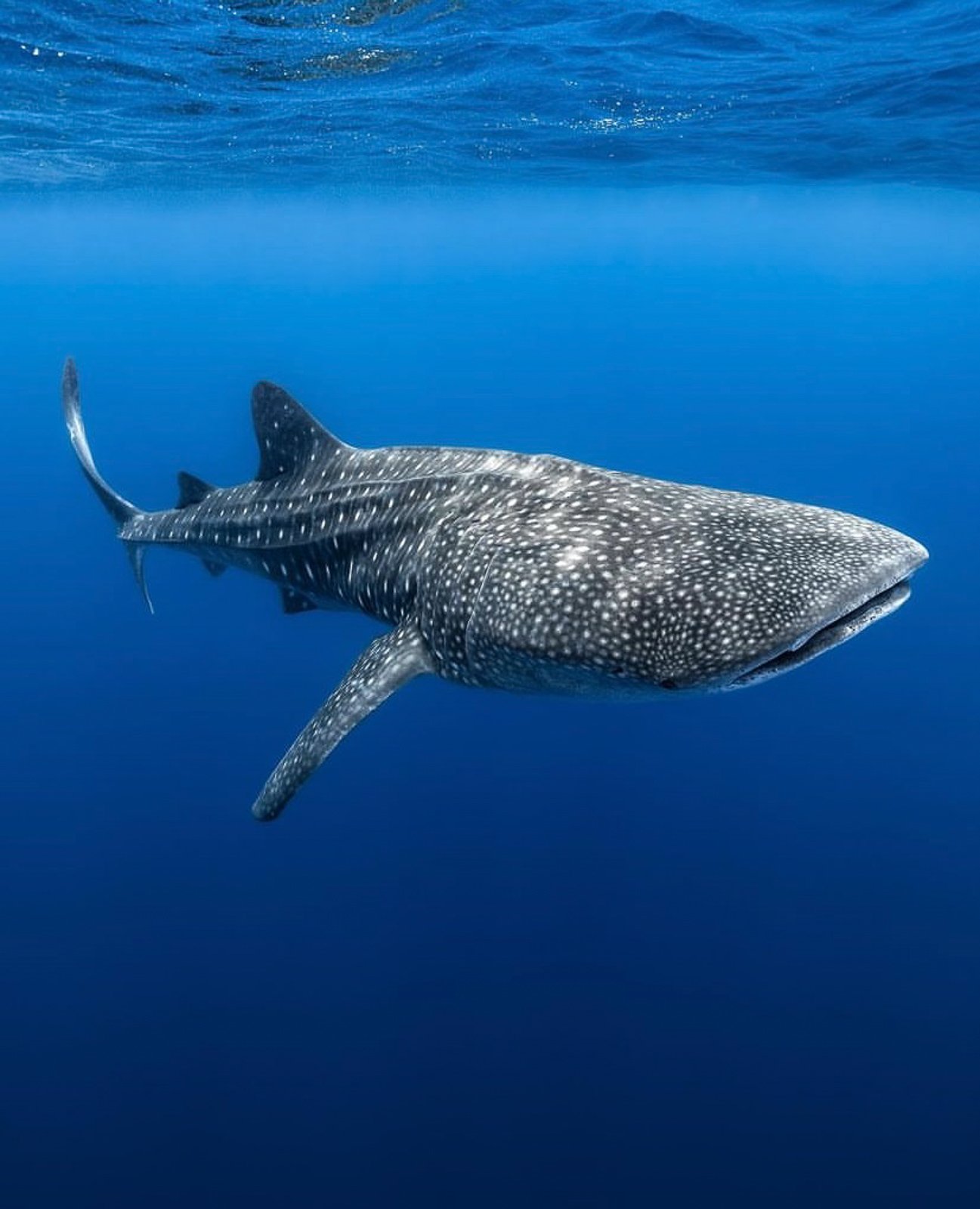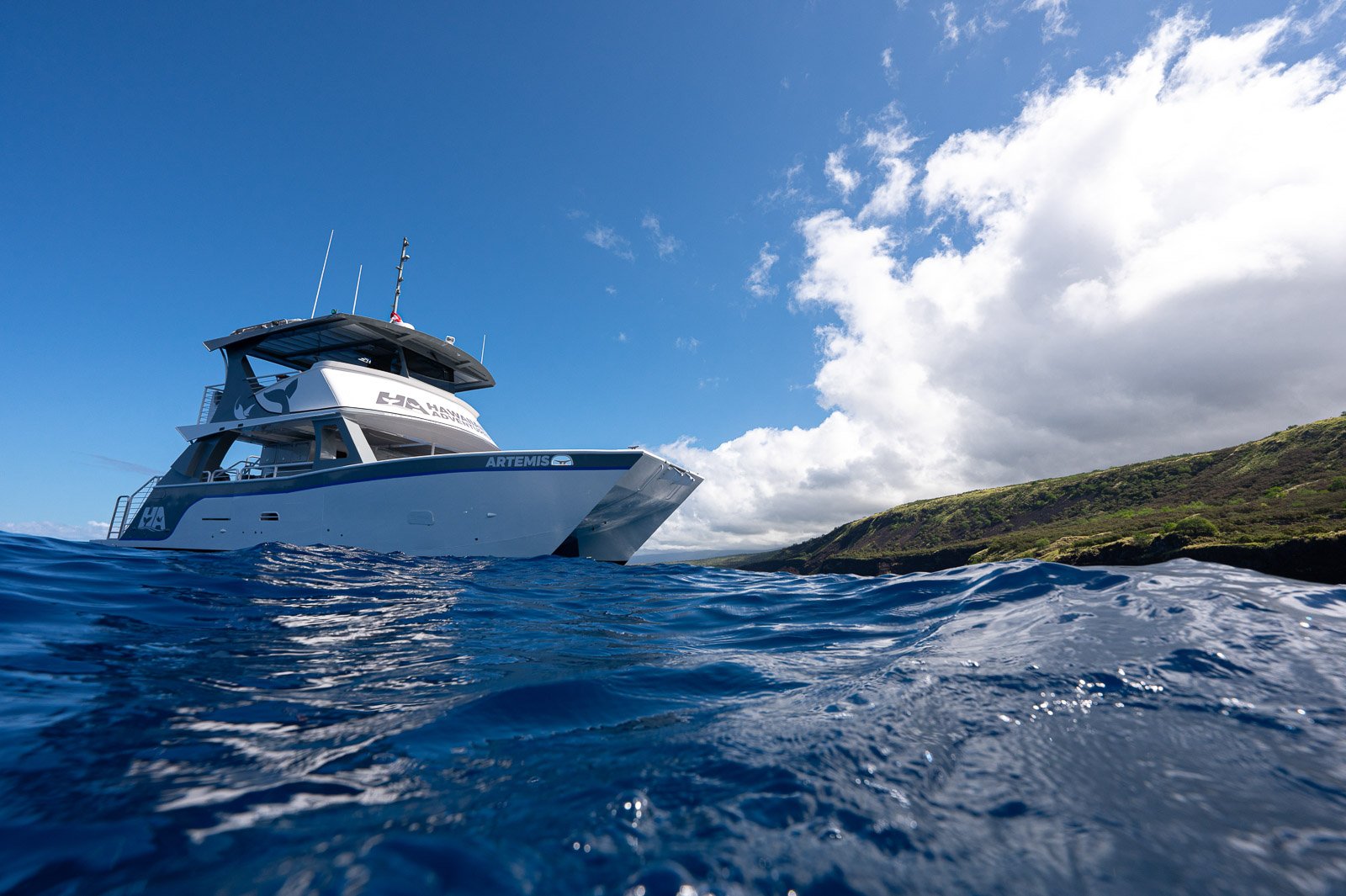
Discover the whales and wildlife that call Kona home.
Whales and Wildlife
The Kona coast boasts an incredibly diverse array of marine life. Venture with us out into the blue in search of graceful mantas, massive mola mola, schooling sharks, or one of more than a dozen species of toothed whales that traverse these island waters.
The search begins as we depart Honokohau Harbor, home to some of Kona’s most consistently calm, coastal waters. Scan the brilliant turquoise hues for sea turtles coming to catch a breath at the surface, or flying fish gliding through the air. During daylight hours, pods of spinner dolphins wind-down after a night of active foraging in the shallows closer to shore, making Kona one of the most reliable locations to witness these stunning cetaceans in the wild.
As we push offshore into deeper waters, the excitement of the unknown takes hold. There is no telling what wonders might rise from the blue on a day-to-day basis, making each new sighting all the more thrilling! Will it be the inky-black fins of short-finned pilot whales, or an acrobatic leap by a pantropical spotted dolphin? Will we spot the tell-tale angular spout of a massive sperm whale, denizens of the deep, or the breath-hold-record-setter extraordinaire Cuvier’s beaked whale? Perhaps we’ll come across a bait-ball, a swarming school of fish whose activity is sure to attract pelagic hunters such as tuna, marlin, sharks or toothed whales. If luck is on our side, we might be graced with a sighting of the largest shark on earth, and gentlest of ocean giants, the whale shark.
Come winter, the beautiful blues of Hawaii’s coastal waters play host to one of nature’s greatest migrations, as thousands of humpback whales return for their annual breeding season. Soon-to-be mothers seeking out warm, sheltered waters in which to bring their little ones into the world. Competitive males vying for the opportunity to mingle with potential partners. New calves with all of the curiosity expected of one first discovering the vast marine world that surrounds them.
Cuvier’s beaked whales have the widest distribution of any beaked whale species in the world, with evidence of multiple populations in Hawaiian waters. Despite this, very little is known about their life history and habits.
There are three partially overlapping, genetically-distinct populations of false killer whales in Hawaiian waters. The group found off of the main islands roams between Ni’ihau and East Hawaii, and is likely 150-200 individuals. This group is broken into three long-term groups called clusters, and females seem to remain with their natal cluster for life.
Humpback whales are found in every ocean and have become one of the most beloved and recognized whales in the world. Their curiosity and charisma make them a favorite among whale watchers. Humpbacks are perhaps the most acrobatic of the baleen whales, aided by their long pectoral flippers and powerful tails.
Reef mantas are what we most commonly see in the waters around Kona. While their size may be intimidating, mantas are gentle filter feeding fish that lack teeth and barbs. They specialize in consuming zooplankton, tiny carnivorous beings, and they feed using two cephalic lobes located on either side of their mouth.
Two Hawaiian Island resident populations of melon-headed whales are recognized. The Kohala population is the smaller group, comprising 400-500 whales and spending most of their time between the northernmost tip of the Big Island and Keahole Point. The Hawaiian Islands population is estimated at over 8,000 whales and spends most of their time in waters 1,000+ meters deep.
Short-finned pilot whales are the second largest delphinids found in Hawaiian waters. Photo-identification has cataloged at least 1,200 distinct individuals around Hawaii, with an estimated 19,000-20,000 throughout the island chain. Resighting data suggests there are several communities of long-term resident groups, and that these groups are socially isolated.
One of two cetaceans listed as Endangered in the Hawaiian Islands, this species is slow to grow and reproduce. Sperm whales around the Hawaiian Islands and throughout the Tropical Eastern Pacific make up a genetically distinct population. There do not seem to be “resident” sperm whale groups around the islands, though some individuals have been re-sighted over the years.
Five genetically distinct island resident populations of Hawaiian spinner dolphins are recognized. These groups rest along the shallow coastlines and white sandy bays of the islands during the day, venturing into deeper waters to feed at night. Spinner dolphins’ acrobatic tendencies earned them their common name, and they may spin up to seven times before falling back into the water.
This social species commonly socializes with Hawaiian spinner dolphins whose similar appearance can make them tricky to tell apart. Key features to look for include spotted patterns on mature individuals and a white-tipped rostrum. Like their spinner dolphin cousins, most feeding takes place at night where they seek out small fish and squid.
Distributed throughout the tropics, whale sharks are rarely found in water less than 70 degrees Fahrenheit. This is a migratory species, with two distinct subpopulations: an Atlantic, and an Indo-Pacific which accounts for 75% of the entire whale shark population.
Kona Whale Watch Tours
Season: December - March
Duration: 2.5-3 Hours
Season: December - March
Duration: 2-2.5 Hours
Season: April - November
Duration: 3-4 Hours
Book Direct and Save
At Hawaiian Adventures Kona, we offer the best available rates to our guests who book direct. Take the hassle out of making reservations through third-party booking agents and you’ll receive the lowest discounted rate. You’ll also receive direct communication with our team of year-round, full-time crew with confirmation emails/text messages, tour reminder emails, and special promotions after your tour. Should your travel plans change, it’s much easier to modify a direct booking as opposed to a third-party booking. Book direct with Hawaiian Adventures Kona to get the best service and lowest prices!



























